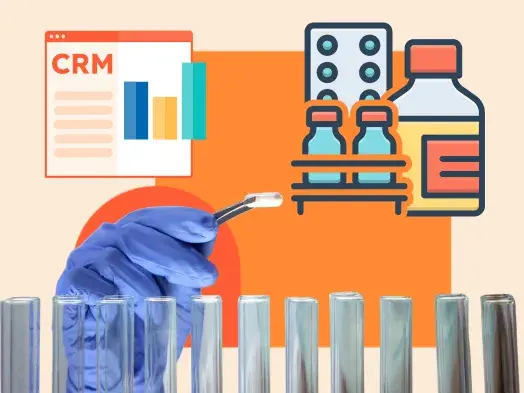Contact Management Best Practices
1. Clean your data.
The digital universe is huge and continues to double in size every two years. A lot of this data, however, is of no use to anyone.
With so-called big data, the biggest challenge lies in determining which data is valuable and which isn’t. When it comes to managing your contacts, bad data includes that which doesn't help you deliver the right message through the right channels.
Examples included duplicate, outdated or incorrect contact information, as well as contact details you’re not supposed to retain due to privacy legislation like GDPR. That's why you need to make sure your contact data is properly cleaned and organized before making any major changes to your contact management processes.
For organizations that have thousands of contacts, it’s practically impossible to clean contact data manually. Instead, you need a smart system for unifying multiple data sources and getting rid of any duplicate, incorrect, or outdated information.
Merging contacts without losing critical data is especially important, which you can achieve by smartly syncing different databases while enriching contact records, instead of keeping information from just one source.
2. Use a centralized database.
Contact data plays a vital role in every department of every business. The challenge here lies in the fact that different departments collect contact details in different ways.
Sales teams typically organize their data in a CRM, while marketers collect data like email addresses via lead gen apps and email marketing platforms. Other departments, like HR and support, have their own systems for managing contacts as well.
Contact management becomes exponentially more complicated in larger businesses where different branches adopt different tools and platforms which don’t always work well together.
To alleviate these problems, you’ll need a centralized database that all the right people have access to.
For very small businesses, a digital address book like Google Contacts or Microsoft Outlook might be just fine, but that’s not going to work for larger companies.
When you have dozens or even hundreds of employees, it’s easy to end up having your contacts spread across multiple apps, hence the need for a cloud-based CRM such as HubSpot, Pipedrive, or Salesforce as the central source of truth in your tech stack.
But a CRM itself doesn’t necessarily solve the problem — you’ll need to keep all your data synced by establishing the necessary app integrations between your CRM and the rest of your business tools.
3. Segment your contacts.
Unless your organization has a very niche audience, there’s no point in sending out the same message to everyone on your mailing list. Even if your business does cater to a broadly similar demographic, you may still need to group contacts into existing customers, leads, internal contacts, suppliers, partners, etc.
Audience segmentation is one of the most powerful tactics for email marketing. Segmenting your mailing lists and using personalization increases open rates, click-throughs, and conversions, simply because the email will be more relevant to your audience.
The optimal way to segment your mailing list depends entirely on your business and the sort of people it caters to. For example, you can send tailored newsletters to your audience with blog posts that will be more relevant to them based on their interests or previous interactions with you.
Some businesses segment their lists based on demographic attributes. Others group their audiences based on when, where, and how they signed up. Others target people who have already purchased a specific product or added one to their wishlist. You can also use a combination of these tactics depending on what works best for you.
4. Prioritize security.
Protecting your contact data and enabling your customers to trust you is one of the most important aspects of contact management.
Even if data such as names and email addresses aren’t always considered sensitive information, they are absolutely subject to data protection and privacy laws such as GDPR or CCPA.
This means that you need to take every necessary step to prevent your mailing lists from being exposed to spammers and cybercriminals — and only using the data you have in ways that your customers have explicitly agreed to.
You’ll also need to implement an opt-in that lets subscribers give their explicit permission for you to send different kinds of emails, including marketing communications. All of the major email marketing platforms — such as Mailchimp or SendGrid — offer full compliance with data protection regulations.
Not only will this help ensure that you stay on the right side of the law, but it will also help you build a high-quality mailing list with contacts who actually want to hear from you. Trust, security, and privacy should be integral to your contact management strategy from the outset.
5. Sync your data.
Maintaining customer data across a variety of cloud-based apps and services can be a daunting task. But a centralized and synchronized database solves that.
While it’s always a good idea to limit the number of apps you use in your business to just the necessary tools to get the job done, you’ll still likely end up with dozens of tools.
For example, you might be using Mailchimp to conduct your email marketing campaigns, HubSpot for your CRM, Zendesk for customer care, and ClickSend for SMS marketing. All these apps collect contact data in different ways, so you end up with lots of different databases that take a lot of time to manage separately.
Automated contact syncing keeps everything in check between your business apps and devices. It does this by keeping the right data in sync between all of your business tools.
This also helps you maintain a central database where all your contacts are readily available to everyone who needs them. By syncing your apps, you empower every team in your business with easy access to critical data. That way, employees will be better positioned to focus on strategic tasks and stay productive rather than spending their time on tedious and repetitive manual processes.


%20(1).png)






.png)
.png)
